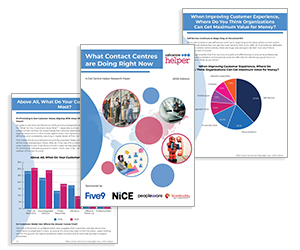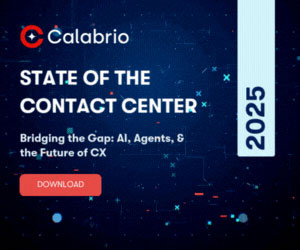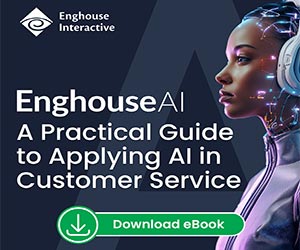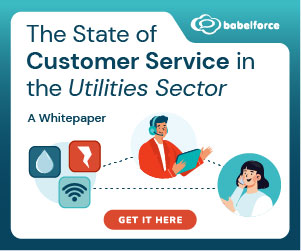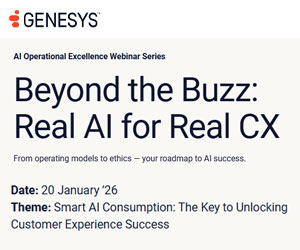Andrea Matsuda at NiCE explores how components both support and challenge contact centre teams, dive into some analyst projections for the coming year, and bring it all together with an overview of some advanced tools that can support a multitasking, customer-obsessed team.
As customer service becomes more dynamic, contact centres play an ever-evolving role in creating exceptional customer experiences.
The past decade has highlighted the deep connection between a thriving contact centre, happy customers, and a robust bottom line.
The back office, customer relationship management systems (CRMs), customer journeys, workforce augmentation, and digital transformation are key to shaping the future of contact centres. Only having the right technology can create a predictable world so businesses can see real value and excel.
Back Office: The Workforce Brain
Effective back-office processes are crucial for ensuring smooth operations and high-quality customer interactions.
Your back office needs to be able to think ahead and adjust when things get complex. Inefficiencies in the back office can result in delays, errors, increased operational costs, and poor customer experience.
According to the Managing the Modern Contact Centre: Current Employer Trends Report, 60% of contact centre managers say the number of customer channels agents handle has increased, also boosting the number of touchpoints the back office needs to support.
Each of these has different response expectations and patterns, making it difficult to create a unified scheduling approach.
Other back-office challenges exist, including:
Non-Sequential Workflows
Digital interactions often don’t follow a linear path. For example, an agent might handle multiple chats simultaneously or switch between different types of tasks. This non-sequential nature complicates the calculation of staffing needs and schedule optimization.
Variable Workloads
The volume of digital interactions can fluctuate significantly, influenced by factors such as marketing campaigns, product launches, or external events. Variability makes it hard to predict demand accurately and schedule staff accordingly.
Deferred Response Times
Unlike phone calls, which require immediate attention, digital interactions like emails can have deferred response times.
This means agents might handle these tasks intermittently, adding complexity to workload forecasting and scheduling.
Concurrency and Multitasking
Agents often manage multiple interactions at once, especially with chat and social media. Understanding and optimizing concurrency requires sophisticated scheduling algorithms that can account for overlapping tasks.
Integration With Traditional Channels
Many contact centres still handle traditional phone calls alongside digital interactions. Integrating these different types of interactions into a cohesive scheduling system is challenging.
Addressing these challenges involves investing in advanced scheduling and forecasting tools, improving data integration, and continuously refining processes to adapt to the dynamic nature of digital interactions.
It’s worth it, however, to face the obstacles head on: 70% of contact centre leaders say customer satisfaction has increased as new support channels have been adopted.
CRMs: The Heart of Customer Interactions
CRM systems are the centre of modern contact teams. A consolidated contact centre agent desktop creates faster, more personalized customer service. built to scale as you grow.
These platforms integrate and manage customer interactions across multiple channels, providing a unified platform for phone calls, emails, live chats, and social media.
CRMs enable businesses to maintain consistent and personalized communication with customers, improving efficiency, and enhancing the overall customer experience.
Key features of CRMs include omnichannel communication, customer data management, call routing, and real-time analytics.
Make informed decisions based on visibility into multiple CRMs and instances to improve customer experience faster and easier.
Choosing a workforce management (WFM) solution that can integrate with and support your CRM is important.
The global CRM market is projected to reach $80 billion in 2025, driven by the increasing demand for integrated, AI-driven solutions.
Workforce augmentation is expected to see significant growth, driven by the increasing need for efficient workforce management solutions.
Mapping Customer Journeys: The Customer Experience Nervous System
How well do you understand your customer journey? Taking control of customer experience allows teams to react in real time and adjust approaches when needed.
The customer journey encompasses all interactions a customer has with a contact center, from initial contact to issue resolution.
By mapping out these touchpoints, contact centres can identify pain points, streamline processes, and enhance the overall customer experience.
Effective customer journey mapping helps in reducing customer effort, improving satisfaction, and fostering loyalty.
Establishing appropriate KPIs is critical in best tracking and understanding how the customer journey changes over time.
With the growing number of service channels in play, about 56% of contact centre managers say they’ve added additional metrics to better capture the full customer experience.
Digital Transformation: Creating a Seamless Contact Centre
Digital transformation is reshaping contact centres by integrating advanced technologies like AI, analytics, and cloud systems. This transformation enables contact centres to provide more personalized, efficient, and proactive support.
Digital transformation not only enhances customer experiences but also empowers support agents with better tools and insights.
Done well, digital transformation improves the wellbeing of both agent teams and customers. As contact centres move towards becoming omnichannel hubs, the importance of digital transformation cannot be overstated.
Ongoing digital transformation will adjust the metrics contact centres focus on. Traditional customer service metrics like average handle time (AHT) and first call resolution (FCR) (around 65% of contact centre teams utilize both of these) will live alongside a broader set of metrics that capture the quality of customer interactions.
These include data points like time to resolution, average touches, average touch time, and channel contacts handled.
Addressing Customer Pain Points in the Back Office
Customer pain points in the back office often arise from inefficiencies including long wait times, data inaccuracies, and lack of support.
Addressing these issues requires focusing on process improvement, technology upgrades, and eliminating data silos, as disconnected systems can lead to inconsistent customer information and fragmented experiences.
Ensuring a seamless and consistent experience across all channels is challenging but crucial, as inconsistencies can confuse customers and diminish their trust in the brand.
Companies that fail to adopt omnichannel strategies will struggle. Customers will continue to value having multiple options for interaction and seamless transitions between channels will be crucial for maintaining satisfaction.
AI will help provide personalized experiences, automate routine tasks, and enhance overall efficiency. This naturally leads to improved CX through better integration of channels and more personalized interactions.
Companies will need to ensure that customer data is consistently recognized and utilized across all touchpoints. Based on that improved integration approach, resources across the contact centre will be better allocated.
Projections For 2026 and Beyond: CRM, WFM, Contact Centres, and Digital Transformation
As we look to the future, several trends and projections are defining contact centre strategy:
Digital Transformation
Digital transformation will continue to be a priority, with a focus on developing AI-ready employees and improving data governance. Organizations will leverage AI to drive workflow evolutions and enhance customer experiences.
Contact Centres
AI-powered automation and hyper-personalization will become standard, with real-time data driving customer interactions. The focus will be on unifying agent workflows and enhancing the overall customer experience.
CRM
AI and machine learning will dominate the CRM landscape, with over 70% of CRM systems expected to incorporate AI capabilities.
The global CRM market is projected to reach $80 billion, driven by the demand for integrated, AI-driven solutions.
WFM
The financial outlook for workforce management (WFM) shows a robust and expanding market.
The workforce management market is expected to reach $19.35 billion by 2030, fueled by the rising adoption of cloud-based solutions, the necessity for workforce optimization, and the growing emphasis on employee engagement.
This blog post has been re-published by kind permission of NiCE-ltd – View the Original Article
For more information about NiCE-ltd - visit the NiCE-ltd Website
Call Centre Helper is not responsible for the content of these guest blog posts. The opinions expressed in this article are those of the author, and do not necessarily reflect those of Call Centre Helper.
Author: NiCE-ltd
Reviewed by: Jo Robinson
Published On: 15th Aug 2025 - Last modified: 20th Aug 2025
Read more about - Guest Blogs, Andrea Matsuda, NiCE, NiCE CXone






 NiCE (NASDAQ: NICE) is transforming the world with AI that puts people first. Our purpose-built AI-powered platforms automate engagements into proactive, safe, intelligent actions, empowering individuals and organizations to innovate and act, from interaction to resolution. Trusted by organizations throughout 150+ countries worldwide, NiCE’s platforms are widely adopted across industries connecting people, systems, and workflows to work smarter at scale, elevating performance across the organization, delivering proven measurable outcomes.
NiCE (NASDAQ: NICE) is transforming the world with AI that puts people first. Our purpose-built AI-powered platforms automate engagements into proactive, safe, intelligent actions, empowering individuals and organizations to innovate and act, from interaction to resolution. Trusted by organizations throughout 150+ countries worldwide, NiCE’s platforms are widely adopted across industries connecting people, systems, and workflows to work smarter at scale, elevating performance across the organization, delivering proven measurable outcomes. 




